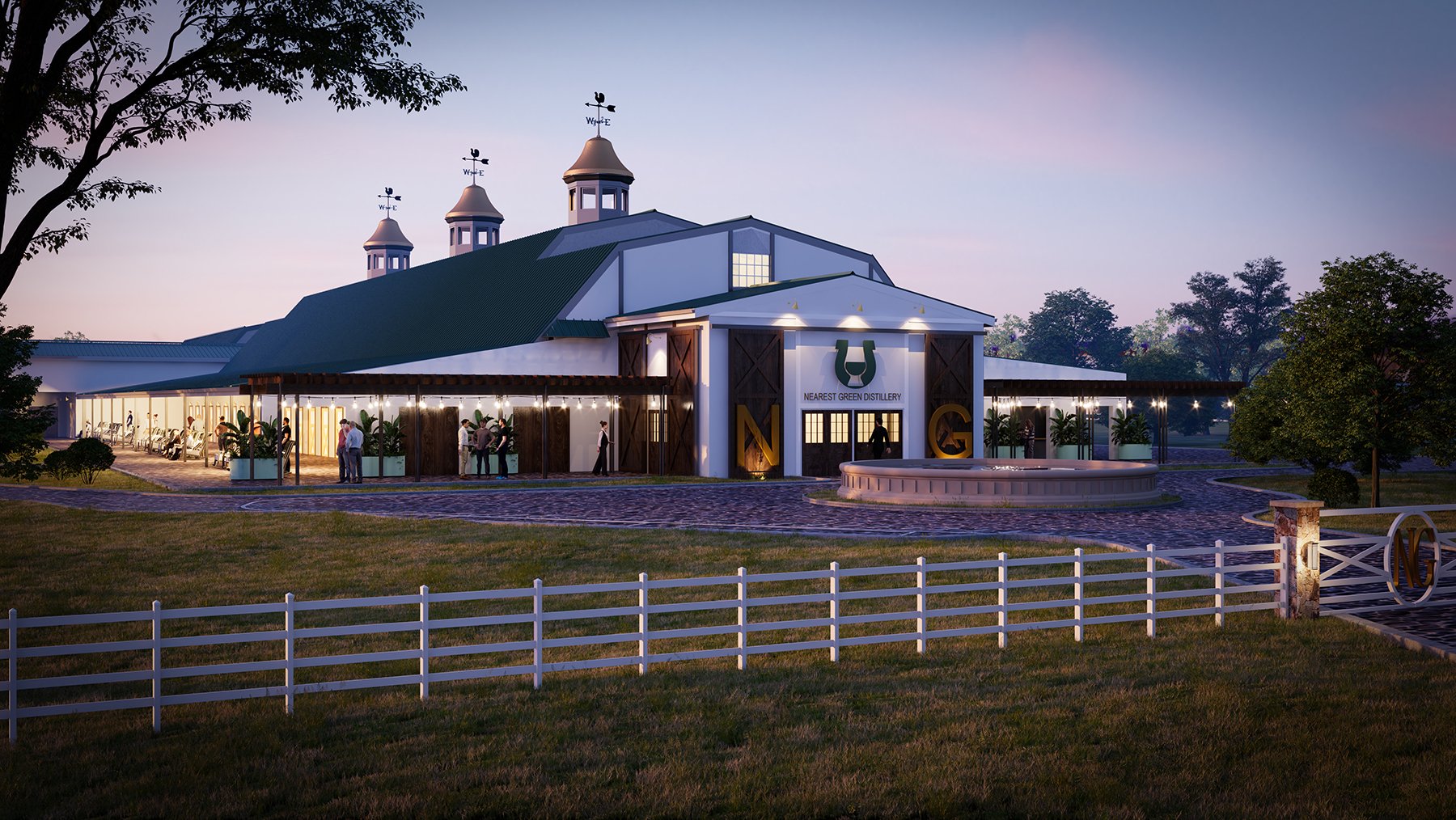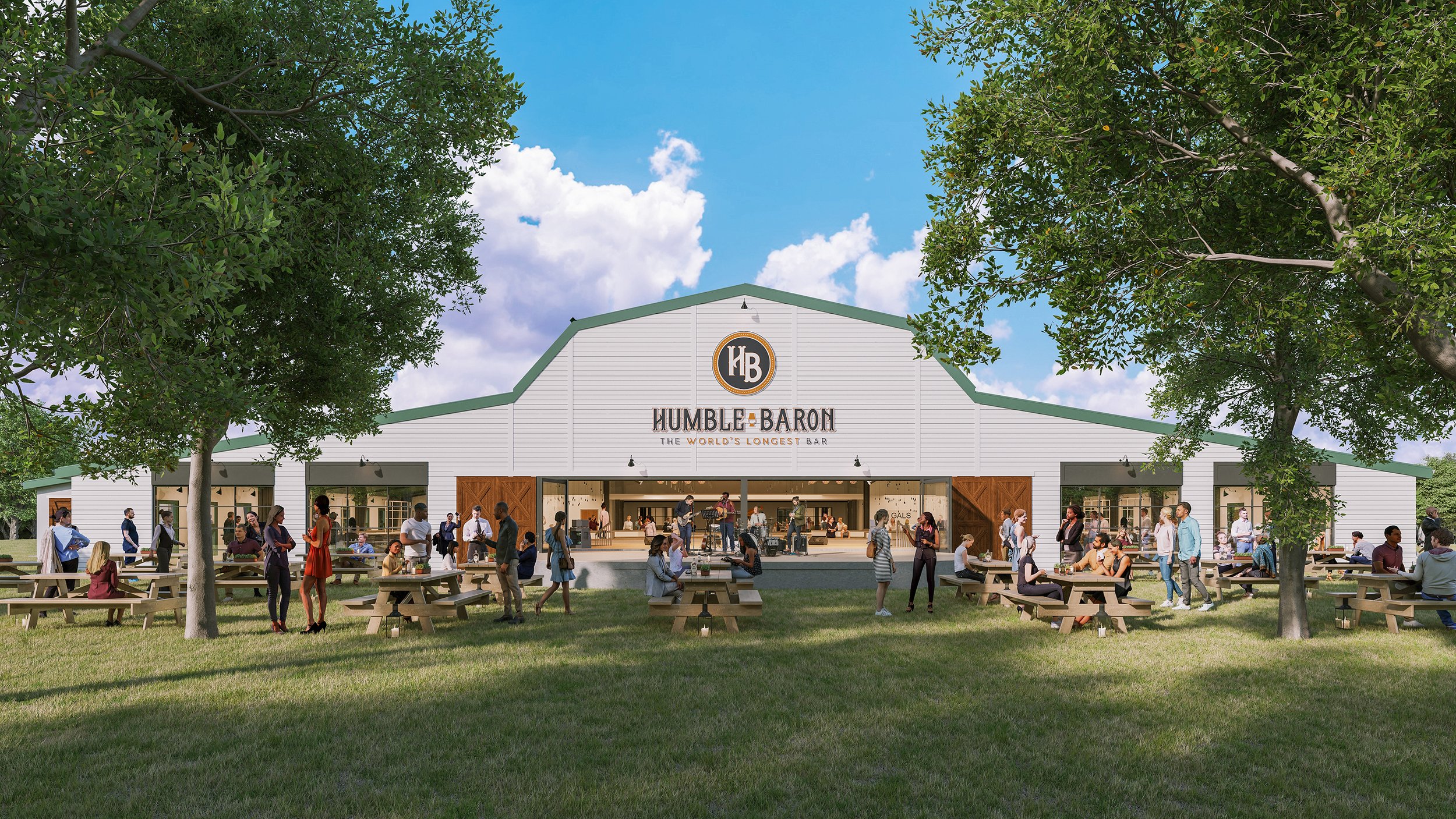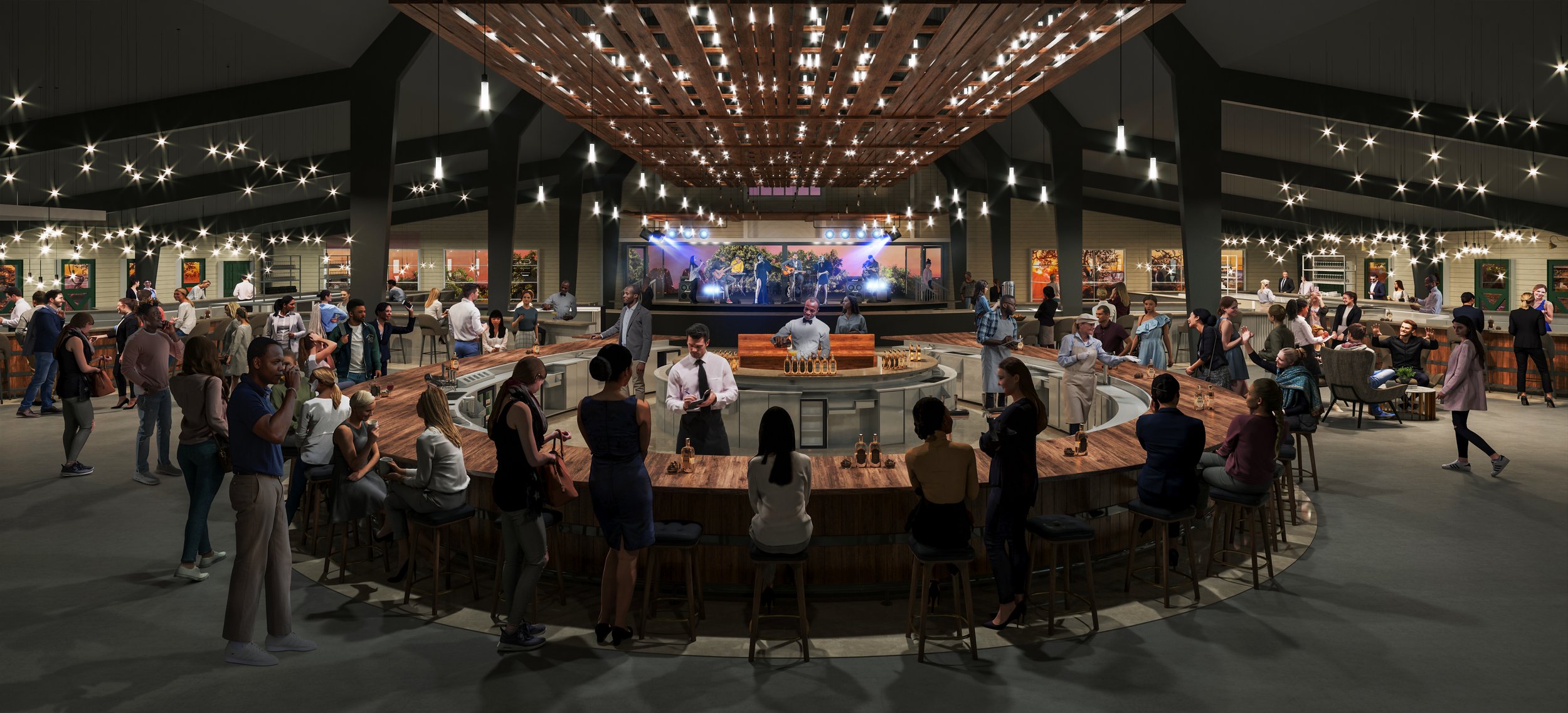The Design Behind the World’s Longest Bar at Uncle Nearest Distillery
The Architectural Renovation Story Behind the Renewed Nearest Green Distillery
A CASE STUDY



Uncle Nearest Premium Whiskey has quite the namesake. The Tennessee whiskey brand is named after Nathan “Nearest” Green, the first-known Black master distiller in the U.S. Born into slavery and emancipated after the Civil War, he taught distilling to Jack Daniel and worked as the first master distiller for Jack Daniel Distillery.
More than 150 years later, GHP had the task of figuring out how to use design to honor this history. We led the architectural design for the renovation of Nearest Green Distillery in Shelbyville, Tennessee. This included the visitors center, a restaurant, the world’s longest bar, and a speakeasy.
Though Uncle Nearest Premium Whiskey was founded in 2016, this renovation incorporated decades of history. We blended the past with the functional needs of the present and paid special attention to adding custom-designed features that pay homage to Nearest Green.
Project Highlights
Services: Historic Renovation and New Construction
Visitors Center
GHP began with an abandoned, 1960s-era horse auction facility that once served as an arena for showcasing the renowned Tennessee Walking Horse. Shelbyville is a hub for the Walking Horse industry.
The team aimed to honor the barn's history, breathing new life into the existing structure and creating a focal point for the Uncle Nearest brand. Preserving the historical nature of the barn and modernizing it to incorporate contemporary elements was essential. The sheer size of the space along with the high ceilings elevated the complexity of site visits and field verifications, in addition to overcoming issues such as bug infestations and hornet nests.
The design team was mindful of how to redesign the space. Once the barn was reconstructed, it gained elements such as cross bracing, barn-like doors, and an overall exterior rustic aesthetic.
Inside the retail space, visitors find themselves face-to-face with a unique blend of history and brand narrative. One of the main features is the Uncle Nearest whiskey walls with bottles acting as the main décor for the hall where visitor tastings take place. These custom, library-inspired shelves display the whiskey bottles in an eye-catching way so they can be seen from anywhere in the center. The retail area doubles as a history museum showcasing murals for whiskey, country music, and the Tennessee Walking Horse. A comprehensive timeline charts the history of Uncle Nearest and whiskey, spanning from wall to wall. Not only does this detail the origins of whiskey but also includes an array of family portraits to portray the more personal side of the brand's history.
Facts:
10,000 square feet
The World's Longest Bar
Nearest Green Distillery introduced a record-setting dimension to its space: Humble Baron, which Guinness World Records crowned as the Longest Bar in the World at 518 feet. GHP and Uncle Nearest intended to break the nearly 25-year-old record from the outset. It beat the previous record title by more than 100 feet.
The design for the bar underwent several evolutions. From a simple rectangle to a more circular shape, it ultimately became a horseshoe configuration. This design echoes the historical context of the visitors center and provides continuity. Three large horseshoe structures interconnect to form an extensive bar that can seat over 200 guests. The core challenge was ensuring that the bar was substantial yet not imposing, maintaining a balance with the surrounding environment.
Access to live entertainment was another key requirement for the space. This led to the development of an adaptable indoor stage that can also accommodate outdoor performances. The design team introduced a versatile partition that delineates between the inside and the outside depending on the event.
Facts:
18,000 square feet
600-person capacity
518-foot bar with 204 bar stools
Speakeasy
Behind a concession stand’s refrigerator door lies Nearest Green Distillery’s tribute to Prohibition Era aesthetics. This speakeasy beside the visitors center provides patrons with an immersive experience.
The design team utilized the history of the location, a former ticket booth in the horse barn. Navigating the initial architectural challenge of a low ceiling in the space, GHP implemented innovative solutions to enhance the perceived height of the room. Arched, stained-glass windows draw the eye upwards and create the illusion of a taller room. These windows also compensate for the lack of natural lighting in the space. The infusion of faux natural light transformed the atmosphere, further convincing patrons that this room inhabits the Prohibition Era.
Facts:
1,100 square feet
Inspired by a 1920s soda fountain bar design
Concealed behind the original horse show concession stand, behind a 1920s-style refrigerator door
Results
The architectural work for Nearest Green Distillery has impacted the Uncle Nearest brand and the people who interact with it. The reimagined horse barn, now a bustling distillery, has become an integral part of Shelbyville's local community. It houses a restaurant, bar, and concert venue.
Visitors note the distillery’s photogenic aspects such as the bar and unique bottle display. But the center's design is not merely aesthetic. It also narrates a story—of the past, present, and future of Uncle Nearest's brand. This storytelling through architecture has turned the visitors center into a testament of thoughtful preservation and innovative design.
Conclusion
Nearest Green Distillery started with a historic horse farm and ended up as a community destination. It is a remarkable example of how architectural and interior design paired with respect for history can come together to create a transformative brand experience for guests. The distillery is more than just a retail space or a museum—it's a hub for whiskey enthusiasts and those who appreciate the blend of old-world charm with contemporary design.
